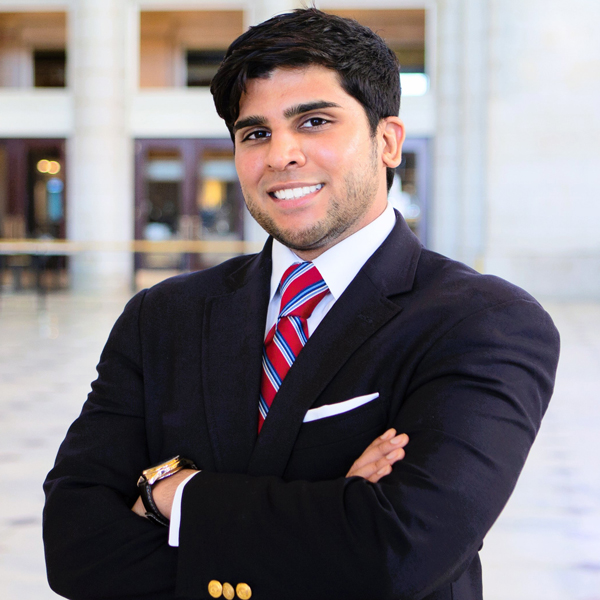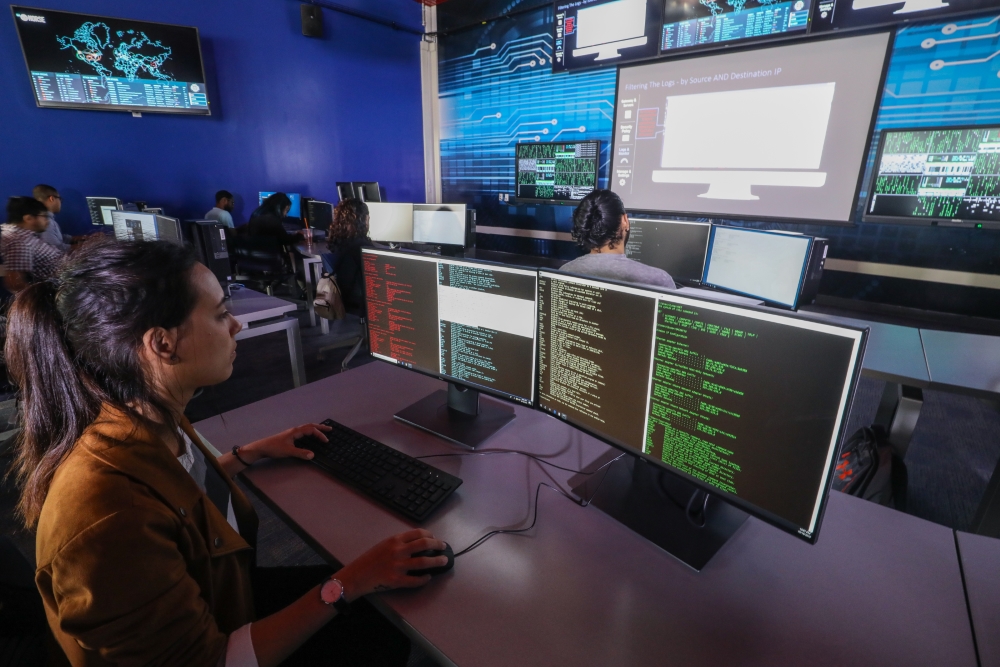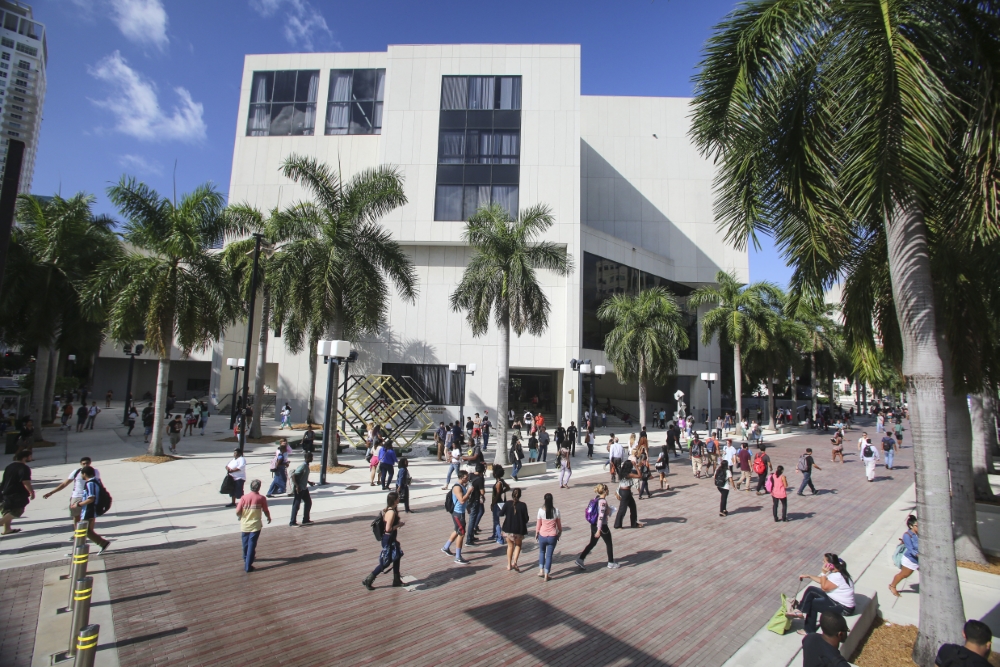A new accelerator and partner council support best practices in workforce development in NSF Innovation Engine regions.
A conversation with researcher and policy strategist Shalin Jyotishi is like witnessing a lecture by a world-class theoretical physicist: You’d better be prepared to take notes. You’ll be led down a path of connections you didn’t know existed. You may leave with more questions than you had when you started.
And you’ll be more excited than ever to find answers to them.
Jyotishi, the founder and managing director for the Future of Work and Innovation Economy Initiative at “nonpartisan think and action tank” New America, in September was announced as the leader of the Accelerator for Community Colleges in the Innovation Economy, launched by New America with a $3 million grant from the Ascendium Education group in order to “turbocharge the capacity, effectiveness, and impact of community and technical college partners” across the National Science Foundation’s 10 Regional Innovation Engines investments.
The NSF Engines program (see map) provides up to 10 years of funding to support applied research, technology translation and workforce development for industries such as semiconductors, water technologies, climate resilience, agri-tech, regenerative medicine and others rooted in emerging technologies. The program supports science- and technology-based economic development across 18 states “that have historically been left out of innovation investments.” Jyotishi calls this program and the adjacent Tech Hubs program “the broadest investment in place-based innovation since President Lincoln signed the act for land grant universities,” the Morrill Act of 1862.

Why the Accelerator? NSF Director Sethuraman Panchanathan put it plainly in a forum earlier in the year: “None of the Regional Innovation Engines will be successful if we don’t have the capacity of the skilled technical workforce unleashed at full force and full scale, everywhere.”
The project builds on New America’s Future of Work and Innovation Economy Initiative (FOWIE). Established in October 2023, FOWIE is dedicated to strengthening postsecondary education, workforce, labor and social institutions and seeks to mitigate the risks and maximize the benefits of emerging technologies for workers and students.
In a whirlwind conversation in fall 2024, Jyotishi, fresh from a study tour of regional innovation ecosystems and related job creation around new technology in Switzerland, shared as many links to resources as he did comments for publication. But everything he shared was valuable.
“The most interesting revelation to me is Switzerland doesn’t lean much into industrial policy,” he says, preferring more of a bottom-up, laissez-faire approach that emerges from the country’s rich history of setting the table with the right ingredients for innovation ecosystems, “but nothing very prescriptive,” Jyotishi said, citing the organic way Basel’s large pharma and biotech hub evolved. Switzerland, known for its heterogeneous and multilingual society, routinely ranks at or near the top of many country-level innovation indices. Jyotishi says the country offers an interesting lesson as the U.S. explores industrial policy and emerging industries, “not as an indicator for the U.S. to abandon industrial policy,” he says, “but casting a spotlight on the balance.”
The trip also highlighted the stark difference between the U.S. and a country where 60% of young people choose to enter a sophisticated apprenticeship system across industries from cooking to biotech to accounting and mechatronics. “The U.S. struggles with creating apprenticeship pathways to jobs,” he said, with programs mostly restricted to the trades. One reason is a lack of funding for intermediaries. Also, he said, employers need to have some skin in the game, with a more long-term approach embedded in corporate infrastructure.
FOWIE has its roots in that sort of industry engagement, and came to be out of research Jyotishi was doing on how AI could improve job quality. “We found industry very eager to be part of those conversations,” he said, noting the presence of Intel at a recent event. “Intel, as it turns out, has invested significantly in AI capacity building at community colleges and has worked to build out boot camp certifications, associate’s degree and baccalaureate degrees in all 50 states. Amazon has done the same thing,” as have Dell and others.
The flow of federal funds supporting infrastructure and semiconductor projects nationwide has only accentuated the importance of such corporate support as institutions and employers alike grapple with the return of a form of industrial policy that had been absent for decades.
Navigating ‘Hype Traps’
Those very federal programs, however, can form an alphabet soup of programming and abstraction. How, I asked Jyotishi, do you “keep it real” in the world of innovation ecosystems? How do you avoid the pitfalls of hype, Russian-doll programming excess and general wonkishness to make sure we’re talking about real jobs at viable companies?
“Navigating hype traps is the most difficult thing in the ‘future of work’ space,” he said, citing the envisioned “green jobs” revolution that hasn’t come true just yet. But even if new jobs aren’t occurring, new skills certainly are.
“Many of the technological advances we’re seeing in the labor market are requiring workers to obtain new skills but not necessarily move into new jobs,” he said. Exhibit A: While solar panel installation and maintenance may involve some job creation, more likely it represents a widening set of skills for an electrician. Similarly, the debut of AI prompted a clamor for “prompt engineers” at companies. But the evolving result, as employers get used to AI and as AI matures, is that “we’re now all becoming prompt engineers.
“Bringing the conversation to the level of skill instead of job is a very useful frame,” Jyotishi said, even if it’s not as useful to politicians who swoon over anything with jobs attached. “One way to mitigate hype cycles is to better understand how mature an emerging technology is with respect to testing and deployment.”

“You don’t often go on LinkedIn to find a welding job. We shouldn’t always assume that job postings capture skills employers need.”
— Shalin Jyotishi, Founder and Managing Director, Future of Work and Innovation Economy Initiative, New America
One metric is technology readiness levels (TRLs), which emerged from NASA in the 1970s. And one method is simple meeting of the minds, such as what Jyotishi and others did via the Manufacturing Institute’s LIFT program in Detroit years ago. LIFT is an advanced manufacturing accelerator connecting advanced materials, manufacturing processes, systems engineering and talent development in the field of lightweight materials.
“We assembled an expert educator team of faculty members who were researchers in lightweight materials and very passionate educators,” he said. “We brought them to meet with researchers at LIFT” who were developing such technologies as a new ductile alloy allowing for thin-wall casting. “We had them identify skills and competencies that would be required of workers in light of these technologies maturing. We brought the workforce conversation upstream … we tried to get a sense of what those skills are before they were deployed. This is very difficult to build as a muscle in economic development organizations and workforce development organizations. But if we’re serious about innovation in the United States, it might be a muscle we can build in the economic development community. When it comes to some of the manufacturing technologies, I think we can do this.”
Another tool to navigate hype traps is the growing role of labor unions. Gallup polls have shown increasing public support of unions, which in turn are showing increasing support for industrial policy and the advent of new technologies, including AI. Partnering with unions around emerging technologies is not hypothetical, Jyotishi said. It’s happening, and along with it a new set of corporate leaders is coming along who think a bit differently about unions. “The menu of win-win solutions is longer than you might think,” he said.
Jyotishi also offers a caveat about the real-time labor market data from such firms as Lightcast, GlassDoor and LinkedIn. It’s an exciting tool for discovering how many jobs are out there, but workforce developers need to keep this in mind: “Many jobs in the middle skills section are under-represented on online job boards,” he said. “You don’t often go on LinkedIn to find a welding job. We shouldn’t always assume that job postings capture skills employers need.” Not to mention the fact some job postings are poorly written.
“There can be an eagerness to look at real-time labor market information as a silver bullet,” Jyotishi said. “ ‘Aha! I know exactly what’s in my area.’ But you need real conversations with real hiring managers to validate labor market information. People get excited by data but don’t look at data quality.”
Best Practices for Real Work
Are there examples where community colleges and universities are learning from one another’s practices or even joining forces when it comes to workforce?
“Miami-Dade College is really cool in this regard,” Jyotishi said. “It was one of the first community colleges in the country to create AI educational offerings,” including credit or non-credit, K-12 immersives, an associate’s degree and one of the first community college baccalaureates in applied AI. (A total of 24 states now permit community colleges to offer baccalaureate degrees.)

Articulation agreements with Florida International University are among Miami-Dade College’s progressive practices in workforce development.
Photo courtesy of Miami Dade College
“They’ve built stackable pathways to it lends itself to career mobility,” he said of Miami-Dade. “Students graduate, go work for a while, and then can come back. What’s really cool is they have articulation agreements with Florida International University for the bachelor’s and master’s program. At Miami-Dade their bachelor’s degree in data analytics folds up into an articulation agreement for a master’s degree program at FIU.”
Another innovative practice in the community college arena is micro-credentials.
“One of my favorite examples is between Mesa Community College and Boeing,” Jyotishi said of an eight-day boot camp in the Maricopa Community College system in Arizona that leads to three college credit hours, an industry certification in cable and wire harness assemblies and an on-site interview with Boeing. For students who complete the boot camp, all but $15 of the $270 cost is reimbursed.
Jyotishi said as enthusiasm builds around non-degree credentials being more worthwhile than four-year degrees, universities are increasingly interested in offering them, but don’t have as much expertise in workforce development.
However, “they do have expertise in online learning and scale,” he said. “Collaborations I’d love to see more of are between universities and community colleges to bring about affordable, accessible programs online.”
In November, New America united with NSF to launch a new “Partners Council” to build capacity for community colleges in NSF Engine regions. Think of it as a heavy foot on the Accelerator launched earlier in the year, convening leaders across the workforce spectrum, including members from such organizations as the American Association for the Advancement of Science (AAAS); the American Manufacturing Communities Collaborative; various university, community college and technology park associations; the National League of Cities; the National Association of Workforce Boards and the International Economic Development Council.
“Our efforts will strengthen community colleges and NSF Engines,” wrote Jyotishi in announcing the new council, “and help ensure that the CHIPS Act and similar investments achieve shared prosperity in the new economy.”

